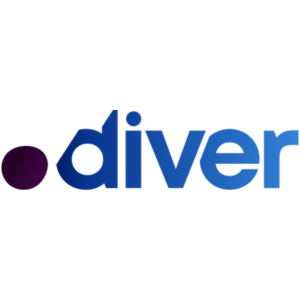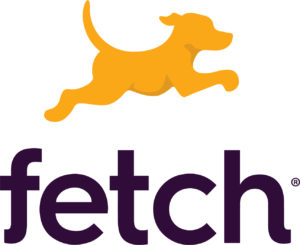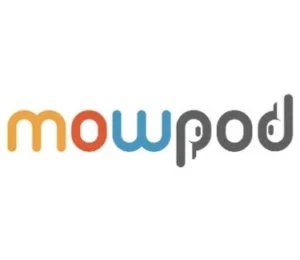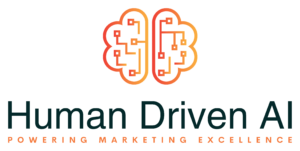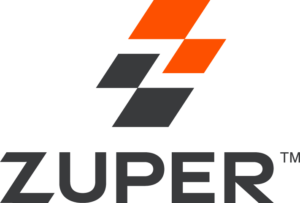Infographics & the people who love them
Amy Balliett
Killer Visual Strategies
Amy Balliett is the CEO and founder of Killer Visual Strategies (formerly Killer Infographics), an industry-leading visual communication agency driving visual strategy and campaigns for Fortune 1000 clients. She owned her first company, a candy store and ice cream parlor, at the age of 17 before heading off for college. She subsequently built a successful career in SEO and marketing, and has headed up SEO at several companies.
- Part 1 Infographics & the people who love them
Show Notes
Quotes
-
“I got into marketing because my Dad made me. He said to me when I decided to go to film school that he doesn’t mind me going to film school but I should at least have a minor that I could fall back on. So, I minored in marketing because I love everything about it but I also love visual stories more. When I moved to Seattle, my first job was in the world of video marketing so I learned a bit of both at that point.” - Amy “At first, I didn’t feel qualified at any marketing job. I graduated in 2004 so we weren’t really in a world yet where digital marketing is that big of a thing. We weren’t in a world where content is king yet because the internet is still evolving in so many ways. I still kinda focused on film for my first few years out of college.” - Amy “What really threw me in marketing more than anything else was attempting a startup that really just failed. I tried to create a social network before Facebook was a thing. I saw people leaving MySpace and I thought there was a real opportunity for artists to have a social network where they can really present their work in more valuable ways.” - Amy “My cousin and I started a social network called “OurBeat” because that was the domain that we could get. I had the idea but I didn’t have anything else. My cousin had all of the savvy. He has the ability to code, he’s an amazing designer as well so I needed to bring something to the table. So I started learning SEO at that time and that was in 2006 and 2007. That’s when I started in marketing.” - Amy “I literally wrote the book SEO for dummies. But then I started getting coached from bloggers, really because I started to look for ways to do link building. I started to build comment spamming not realizing that’s what I’m doing, and just threw links into every comment I would post until finally a blogger reached out to me and said, ‘You are a spammer, you’re not a marketer.’ Then he started to share websites where I learned a great deal of information. It was a trial by fire.” - Amy “The social network never took off and there are a bazillion reasons it didn’t. And one of the biggest is that, the biggest talent in that startup was my cousin. It was the two of us working and all of the work was really on his plate to build a product and this is a product that should’ve been built by hundreds of developers, not one. So it failed but we learned a lot from each other and I learned that I needed to learn code, learn more graphic design than I knew at the time because I just didn’t wanna be an idea person. I want to be the person who has an idea and can bring that idea to fruition.” - Amy “So I started looking for a new job. I was a video editor at the time, I knew I wanted to completely transition into SEO and I started applying from one SEO manager position after another. Some interviews, they could sniff out that I knew the right buzzwords but I hadn’t ever really run an SEO campaign.” - Amy “I showed them what I did with OurBeat but when they asked me about my history and things like that, I very vaguely would answer. I would say I’ve been doing marketing for years which was true but it wasn’t online marketing yet. Those were the white lies I did in the interview that luckily didn’t end up shooting myself in the foot going forward.” - Amy “Sesame is where I really cut my teeth. I really lucked out there. I had a team that was so excited to have me, we were all learning as we’re going and we were a scrappy startup and that team is a team of web developers and taught me webdev, it was amazing. I learned all the code I could possibly learn and I knew enough to be dangerous.” - Amy “With Sesame we were focused on local SEO and I think it’s a lot easier to learn local SEO before you learn national and global SEO campaigns. So I was able to really practice new tactics and I got a lot of wins. In the first year that I was working there, I created a new product offering that was all surrounding of this dental and orthodontic sites, and sold a lot of it because I was incentivized to do some sales as well and really got to a point where I knew my stuff but all because we were an open and candid team.” - Amy “My second role was at All-Star and again a phenomenal team. What was really interesting about All Star was the fact that organic traffic drove at least 80% of the revenue of the company. So it was a really important group to be a part of. That’s where I learned, all things marketing.” - Amy “I was able to come in with my SEO knowledge and my code knowledge and re-optimize the sites to a place where they really needed to be. My SEO belief has always been and will continue to be Google is in the business of delivering a great service to their end audience. So if you focus on building a great website for your end audience, Google will reward you.” - Amy “I focused on White Hat best practices and then I focused on building a number of smaller websites to drive traffic to the larger sites. It was there that I had some utterly amazing marketers to work with and I really learned how to dive into analytics and let data drive my decisions. I learned how to develop a really good content marketing plan strategy because I have people willing to work with me and help me grow.” - Amy “I was very happy at All Stars, they treated their employees amazingly and I really didn’t have any issues with where I was. I honestly just had a previous business partner, co-founder who worked at All Star as well who came to my desk everyday asking me to start a company with him. And after six months of that, I finally gave in.” - Amy “We launched in February 2009, the project was a take on the All Stars directory model. The entire model was education lead generation where different for-profit colleges and universities would pay All-Star for potential students asking for more information about that college or university. So we saw that model and realized that the lead generation space was ripe for growth.” - Amy “So we launched a bunch of websites, none of which were in the education space because we had a non-compete but we launched websites that were affiliate-based and lead gen based.” - Amy “We actually for a while became the industry’s standard where people trusted the Zippy cup ranking above anything else that was out there because nobody else was really doing that, at the time. My job was to design, build, and optimize the site. My business partner’s job was to build affiliate partnerships with right content where we share the bulk of writing contents for the sites and to do all the business development for the company.” - Amy “It worked out really well. We were doing it on our evenings and weekends, and we were finally making $4,000 dollars a month off of ZippyCart and said it was enough for us to justify quitting our jobs and putting in a full-time effort to see if we can quadruple and if not, grow it even more. That was June 2010 when I quit my job at All-Star.” - Amy “In the first three weeks, I redesigned ZippyCart entirely to have better conversion files. So first I focused on the conversion funnel optimization which grew our revenue by about 50%. But also in that first three weeks, I designed the first infographic that I ever designed. I didn’t realize at the time that would catapult me into the world I live in today. But I designed an absolutely horrific infographic, it’s called the history of e-commerce but I designed it for the SEO value entirely.” - Amy “In 2010, people were just talking about infographics and holy cow, were they a good link play. The History of E-Commerce infographic garnered 1,500 backlinks in the two weeks. The reason it did was there wasn’t yet an infographic on that topic.” - Amy “Here was the coolest thing that happened to me, that Paid Rank Infographic? I was super proud of it. I thought it was just the best thing since sliced bread. But I look at it now and it’s not even an infographic. You have to read every line to understand it so it’s not an infographic but we pushed it out online and Rand Fishkin who I have been following for years responded to that infographic and just said, ‘That’s not an infographic’, that’s all he said and it crushed me because he was my hero.” - Amy “So that experience forced me to reassess what makes a good infographic versus what makes a bad infographic. That one comment sent me down a very long path of learning about visual communication, really understanding why certain types of content perform better online than others and all I really wanted to do at that point was understanding the science behind engagement and content marketing.” - Amy “It was a very slow pulling of the band aid off. My business partner came to me and said, ‘I thought of a really cool name, Killer Infographic and guess what the domain exists so I bought it last night. Let’s make a directory of infographics.’ That was the entire plan. We immediately launched the site, got it up the same day. Then fast forward to six weeks and suddenly BlueGlass, a now defunct SEO agency, they reached out and said, ‘we’re not happy with the review you’ve given us for our infographics so if you think you could do better, why don’t you design our next set of infographics’ and for me, that was a light bulb moment. I saw an opportunity to pivot the entire business.” - Amy “It wasn’t exactly the business route my partner really wanted to go because we saw the issues of growing a service-based agency so we ended up running both for a while. We made an agreement that I would focus on Killer and he would focus on ZippyCart and whichever one really succeeded after six months would be what we would be shifting our attention to. Then Google came with a big algorithm update that just killed directories online and ZippyCart floundered.” - Amy “Meanwhile Killer had gone from about 14 orders in Q4 of 2010 to 40 orders a month at the very start of 2011. It was just gangbusters. It was doing a great job, BlueGlass was our biggest customer until they went out of business six months into 2011 but luckily we have been building up other customers at that point and we shifted entirely.” - Amy “It was just one of those where I put so much time into it because I loved it because it was the combination of my two loves. I love marketing, I consider myself a marketer above a designer. Marketing is one of my absolute favorite professions, and favorite things to evolve and learn about. Visual storytelling is a great tool for marketing.” - Amy “Killer used to be called Killer Infographics and we changed it to Killer Visuals Strategies back in 2019. We started with just a focus on infographics and honestly at the time I thought, we’re playing on a trend and this trend is gonna die. So we maybe have a five-year runway to really build and capitalize off of this.” - Amy “I have since learned that infographics are just here to stay because today’s audiences are so overwhelmed by so much content that it’s really important to develop content that quickly hooks them and it’s important to lean into the fact that 91% of audience prefer visual content as their first, second, and third form of information delivery and 86% of audiences today prefer to learn visually versus textually and audibly.” - Amy “Infographics is just one piece of a much larger pie and the pie is called visual communication. As we started to recognize the audience demand we started to really evolve and grow as a company. We added services over the years which is why we had to change our name, we started adding specialization around it and because there’s so many people around there producing bad infographics, I felt the need to start speaking to it at a much broader level.” - Amy “It started with AdobeMax. They reached out to me in 2013 and asked if I would be willing to do a presentation on infographic design. At the same time, the school of visual concepts which is a school in Seattle came to me and said, ‘can you just start teaching an all-day workshop on infographic design and both came when I actually have time to develop these presentations.” - Amy “I love public speaking and Sesame and All-Stars had me do a little public speaking when I was with them so it seemed like a natural thing for me to jump in. We weren’t sure what would come of it but after we spoke at AdobeMax, we landed key Fortune500 clients. Every time I spoke at school of visual concept, Microsoft and Amazon would have their employees there so it gave us a good end for them. Right there I realized, this is a good way to market and grow the company.” - Amy “Part of me just really wanted to level the playing field. I wanted to make it clear that there are really good players in the industry who work really hard to gain success for their clients and then there are snake oil salesmen in the industry who are just slopping stock images together, putting text on it and charging an hour. So part of it was just getting the best practices out there to educate.” - Amy “The other thing was, I noticed a disconnect between designers and marketers and I had that disconnect when I was at All-Star. I would hire designers, freelancers or agents and often wouldn’t get the service I expected, they would often treat me like I didn’t know what they were doing even though I knew graphic design and I knew code so I would call them out on exorbitant quotes when I knew this is half a day of work.” - Amy “I felt like marketers get taken advantage of a lot when they hire an agency that tries to play on their lack of knowledge and understanding of the craft. So I wanted to educate marketers, I wanted to empower marketers to find the right partners to create great content instead of what most marketers were doing which is developing low-quality content and then spending an arm and a leg promoting their content just to get eyes on it. And I knew that with great visual content you can get a 10X ROI.” - Amy “Killer needs a good partner to grow. I feel like Killer was such a reactionary agency, it wasn’t what I originally started out to create. It’s something that we morphed into and pivoted into over time. I knew that I wasn’t an agency person in a sense that I’ve never worked with an agency before and just learned as I went and I made a lot of mistakes in the process.” - Amy “I feel like for Killer to get to the next level as a company, I need some guidance from some real agency founders who have created multiple agencies in their lives. People who had a lot of success in the arena of building the right team and building out the right payment model.” - Amy “In 2018, I took the company to market looking for that right partner and I found a unicorn. At the end of 2018 the company was fully sold to a group of companies headed up by Lieberman Research worldwide who purchased Kelton Global and other companies so we could basically deliver end-to-end services for clients.” - Amy “In 2019 we went into the first phase of merging and working together. That first phase is getting to know each other, figuring out where there are some good fits, overlaps and where there are opportunities to bring to our prospective clients. Then 2020 hit and we started 2020 with this beautiful vision of taking all our companies in the portfolio and building an insights-driven marketing agency.” - Amy “We called the company Material, it is a group of 1200 of us, COVID kind of accelerated things for us so we were gonna slowly step into it over a three-year period and then COVID hit and we said, ‘now we’re all working remotely we all have to communicate in different ways and we all started working as one team naturally. We launched Material in the middle of the year, last year and while we still have our individual brand, we are slowly forming into Material as a whole.” - Amy “I started conceiving of the book back in 2013 or 2014 but I never had the time to write it. Basically what happened in July of 2019 my publisher asked me if I wanted to write a book so suddenly I had somebody holding me accountable with a timeline and a contract and that meant everything I had been writing over the years, I could compile and write out the right narrative.” - Amy “The reason I wanted to write it is because it goes back to this idea of marketers and designers having a lot of disconnect. Designers don’t necessarily know how to talk to marketers, a lot of freelance designers especially feel like they can’t hold their clients to goals and to a target audience. They feel like their job is to execute and not bring a strategy to the mix.” - Amy “In the same vein, a lot of marketers actually fear hiring designers because they’re afraid of design ego. So I wrote a book that gave designers the language that they needed to talk to marketers and marketers a very clear guide on how to create the best content out there to really drive conversions, drive links, build their own following and their own thought leadership but also all the language they needed to guide designers.” - Amy 40:27 - Advice for creatives who want to be in the business“For the creatives, you have to give up that belief that you can never have a 9 to 5. I think a lot of creatives want to avoid the 9 to 5 but if you really want to work in the business world, you have to work at the same hours of the business world.” - Amy“The other thing is prioritize goals and audience over everything else. Oftentimes, the creatives prioritize the creative process. We prioritize the creative output, our own aesthetic direction and what we rarely think about is how this will work out in the world and what it is supposed to be doing. Creative types who want to succeed in business have to realize that sometimes the creative work isn’t gonna be as creative as you want it to be but if it accomplishes the goals of your customer, then you’ve seen great success.” - Amy
- Part 1 Infographics & the people who love them
Amy Balliett
Killer Visual Strategies
Amy Balliett is the CEO and founder of Killer Visual Strategies (formerly Killer Infographics), an industry-leading visual communication agency driving visual strategy and campaigns for Fortune 1000 clients. She owned her first company, a candy store and ice cream parlor, at the age of 17 before heading off for college. She subsequently built a successful career in SEO and marketing, and has headed up SEO at several companies.
Up Next:
-
Part 1Infographics & the people who love them
Amy Balliett is the CEO and founder of Killer Visual Strategies (formerly Killer Infographics), an industry-leading visual communication agency driving visual strategy and campaigns for Fortune 1000 clients. She owned her first company, a candy store and ice cream parlor, at the age of 17 before heading off for college. She subsequently built a successful career in SEO and marketing, and has headed up SEO at several companies.




